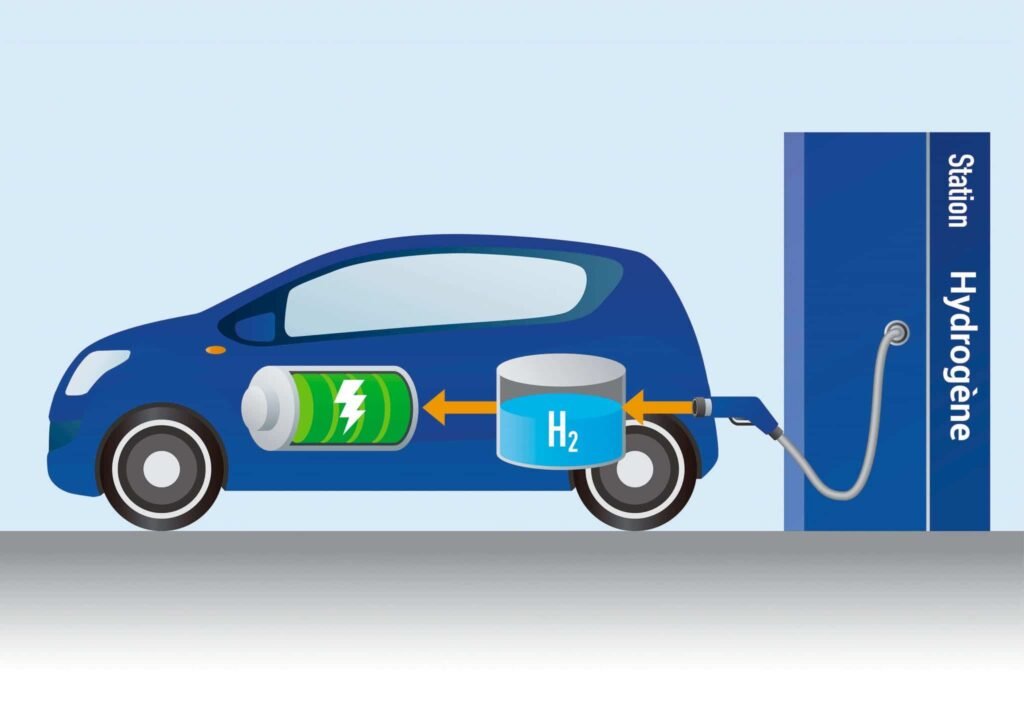The deployment by 2030/2040 of hydrogen is particularly detailed and precise in the multi -year energy programming (PPE). It seemed interesting to us to be able to publish it almost in full, because it puts in perspective the current situation and the objectives to be achieved.
Electrolysis
“You have to be ready to deploy French solutions in mainland France by 2030–2040 and ensure that they participate in the development of a competitive sector. This requires improving massive storage and electrolysis technologies. By 2035, it is planned to prepare the development and integration of the various technological bricks of the electricity conversion technology of renewable gas in gas by making sufficient demonstrators. (…) Some isolated areas already need flexibility services and renewable energies storage capacities to decarbonize their energy production without destabilizing their electrical systems. Non -interconnected areas could therefore constitute land for experiments, even pilot deployments (…).
Costs in sharp drop in electrolysis systems make it possible to envisage today various markets discussed below. The cost of production of hydrogen by electrolyser depends on the technology used, the duration of use and especially on the price of electricity. Thus, alkaline electrolysers are able to produce a hydrogen of 4 to 5 €/kg (i.e. 100 to 130 €/MWHPCS) for a duration of use of around 4,000 to 5,000 hours/year and a cost of electricity around € 50/MWh. By 2030, on the basis of a strong industrialization of these technologies, hydrogen produced by electrolysis could cost around 2.5 and 3.5 €/kg (65 to 90 €/MWhpcs). »»
Industrial hydrogen
“The global hydrogen market is today essentially an industrial market: hydrogen is a product used in the petroleum industry and in the chemical industry. Globally, the industrial hydrogen market is estimated today at 60 MT. In France, it represents around 1 MT.
In 2018, the cost cost of hydrogen produced in large quantities from fossil products (gas vaporeformation) amounts to between 1.5 and 2.5 €/kg (i.e. around 38 to 65 € /MWh) for industrial customers consuming large volumes (refineries). For certain less intensive uses sufficiently stable (glassware, food, metallurgy, electronics) and for which hydrogen is transported and transported by truck – called “diffuse industrial uses” – its cost cost is between 10 and 20 €/kg ( 250 to 510 €/MWh), but rarely below 8 €/kg (around 200 €/MWh). There is therefore a market potential accessible today, for hydrogen produced directly on site by electrolysis.
A balance should be found between diffuse uses, for which the current price is higher, but which involve more complex industrialization (…) and more massive uses whose price of current technologies is more important, but which can allow you to quickly Install series of electrolysis and increase power. »»
Mobility hydrogen
“Hydrogen in mobility is complementary to batteries and biognv. It has key advantages for intensive uses which require strong autonomy and low recharge time, particularly in urban areas where measures are taken to reduce pollution and noise pollution. Many projects are already emerging in the territories around fleets of light professional vehicles (…).
Due to a still limited volume effect, the total cost of possession of a hydrogen vehicle remains higher than that of thermal equivalents (between 20 % and 50 %). But with support for start -up, it would be possible to cover the additional cost of fuel cell vehicles and avitail vehicles at an equivalent at the cost of energy for a diesel. By 2030, thanks in particular to the progress hoped for in terms of the cost of electrolysis, hydrogen decarbon distributed in station should be at a compatible price level (<7 €/kg, i.e. <7 € per 100 km) with the needs of hydrogen mobility.
These advantages are found mainly in certain heavy transport (road, rail and river), for which the weight, the size and the on -board energy of the batteries remain penalizing to date. These heavy transports are a major lever to ensure significant hydrogen volumes quickly and generate an autonomous ecosystem by economies of scale by allowing to deploy large stations more quickly. This is a key point of the economic model of the charging stations.
To develop mobility from hydrogen, the objective is:
• encourage the development of a range of heavy vehicles not only road, but also for other modes (boats, trains, aeronautics);
• Continue the logic of territorial fleets. As such, the role of communities to aggregate uses within territorial projects is essential. Other uses may also be envisaged in these territorial projects (for example, in parallel industry/mobility). (…) “
Hydrogen for storage
“As an energy vector, hydrogen produced by electrolysis is long -term a structuring solution for the integration of renewable energies into the electrical system: compared to other storage solutions such as batteries, it is currently the means Massive storage of the most promising intermittent electrical renewable energies. It can also be used as a storage vector either by direct injection into the gas network or by methanation (production of synthetic methane).
Electrolysers are also able to render other services to the electricity network, in the same way as other storage technologies or other flexibility means (demand management, interconnection development). »»

